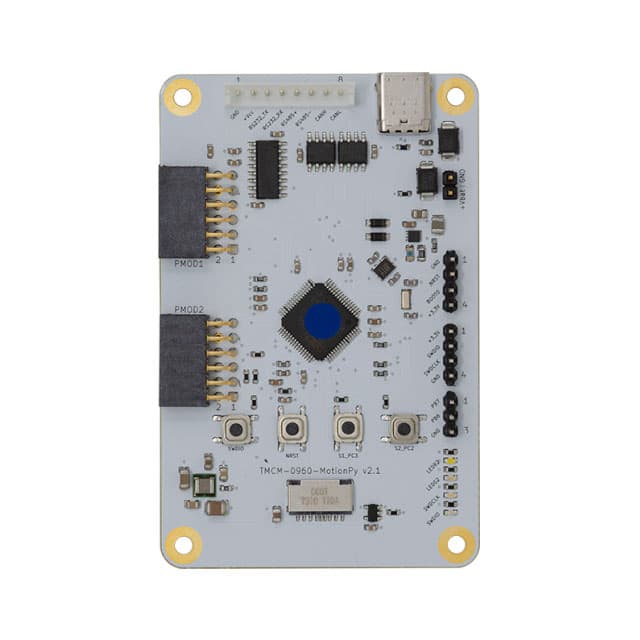
TRINAMIC Motion Control GmbH
TRINAMIC Motion Control GmbH is a well-established company specializing in motion control solutions. Founded in 1992 and headquartered in Germany, TRINAMIC has gained recognition for its expertise in motor and motion control technologies. The company offers a wide range of integrated circuits, modules, and software for controlling and driving electric motors.With a strong focus on innovation, TRINAMIC develops cutting-edge products that provide precise and efficient motion control across various industries. Their product portfolio includes motor drivers, motion controllers, sensors, and development tools, catering to applications in robotics, automation, 3D printing, and more.One of TRINAMIC's key strengths lies in their advanced technologies, such as their unique motor control algorithms and intelligent sensor interfaces. These technologies allow for optimized performance, reduced energy consumption, and enhanced overall system efficiency. Additionally, TRINAMIC's products are known for their ease of use, flexibility, and scalability, making them suitable for both small-scale and large-scale applications.TRINAMIC prides itself on delivering comprehensive customer support and collaboration. Their team of experts provides technical assistance, application guidance, and customization options to meet specific requirements. This customer-centric approach has earned TRINAMIC a strong reputation for reliability and customer satisfaction.With a commitment to continuous improvement and a focus on customer needs, TRINAMIC Motion Control GmbH remains at the forefront of the motion control industry. Their state-of-the-art solutions, combined with exceptional customer support, make them a trusted partner for companies seeking reliable and efficient motion control technology.
Single Board Computers (SBCs)
Results:
2
Series
Expansion Site/Bus
Analog Input
Storage Interface
Core Processor
Video Outputs
Speed
Operating Temperature
Watchdog Timer
USB
Size / Dimension
Digital I/O Lines
RS-232 (422, 485)
RAM Capacity/Installed
Power (Watts)
Form Factor
Contents
Cooling Type
Ethernet
Number of Cores
Results remaining:2
Applied Filters:
TRINAMIC Motion Control GmbH
About Single Board Computers (SBCs)
Single Board Computers (SBCs) are compact electronic devices that contain all the necessary components of a computer on a single board. These devices typically include a microprocessor, memory, input/output interfaces, and expansion sites. The microprocessor is the core component of the SBC, responsible for performing numerical and logical processing tasks. The speed, number of cores, power consumption, and cooling type are important characteristics of the microprocessor, as they determine the overall performance and efficiency of the SBC. SBCs can be equipped with a variety of different microprocessors, including those produced by companies such as Advantech, AMD (including their core, G-series, Geode, and GX lines), ARMADA, ARM Cortex, Atom, Celeron, ColdFire, Core 2, Intel (including their Atom, Celeron, Core, LGA, Quark, Apollo, and Pentium lines), Pentium, Rabbit, RK3288, Rochchip, TI Sitara, ULV Celeron, VIA Eden, Vortex, and Z180. In addition to the microprocessor, SBCs also contain memory, which is used to store data and software instructions. The amount and type of memory present on an SBC can impact its performance and compatibility with different software applications. Input/output interfaces allow the SBC to communicate with other devices and peripherals, such as displays, keyboards, and sensors. Expansion sites provide the ability to add additional functionality or customize the SBC to specific application requirements. Overall, SBCs offer a compact and versatile solution for incorporating computing power into a wide range of devices and equipment. By selecting the appropriate microprocessor, memory, and expansion options, developers can create customized SBC solutions tailored to their unique needs.


